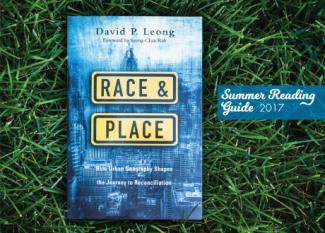How the Place We Choose to Live Grows Our Faith

Throughout much of my life before college, it seemed like we were always moving. By the time I arrived in Seattle to attend the University of Washington (UW) in 1996, my family had lived in six cities in four different states. No, my parents were not in the military, and as far as I know, we weren’t running from the law. My dad was an entrepreneur of sorts, and I guess new opportunities kept us on the move. So by the time I graduated from UW, I was ready to stay put for once.
At the time, I didn’t have much of a concept of putting down roots, but I did know that my involvement in a Chinese church in south Seattle helped me to feel anchored to something. Chinese Baptist Church on Beacon Hill is located in a traditionally immigrant and working-class neighborhood, populated heavily with multi-generational families from Hong Kong, Vietnam, and the Philippines, as well as African Americans and Latinos. As I was trying to make sense of post-college working life, this community of faith helped to plant the seeds that would eventually root me in Seattle for more than two decades.
Over these years, both my faith journey and my diverse neighborhood have gone through a lot of changes. But if there’s one thing that’s helped to keep me rooted and growing, it’s been paying attention to place. By “place,” I mean the whole of the surrounding urban geography that makes up my day-to-day life: sidewalks, intersections, grocery stores, parks, and apartment buildings.
What does place have to do with the life of faith?
By paying closer attention to place, I’ve come to realize how formative our cities and neighborhoods really are. The locations of our homes, schools, and churches shape our social networks, and the landscapes of our places of work and recreation often determine what economic opportunities we may (or may not) have. In short, who you know, how you know them, and what those relationships will mean for your life are often filtered through the patterns and structures of geography. Why was it, I used to wonder, that most of my neighbors in south Seattle struggled to find good schools and affordable housing, while families in north Seattle seemed to have so many opportunities?
As I worked with youth and families in my community to share the good news of God’s love, it became impossible for me to separate God’s desire for their flourishing from the geographic patterns that prevented their well-being. I began to recognize that my life outside of the church—where I lived, worked, and shopped—was in various ways connected to my neighbors. Apparently, those daily habits and decisions were not “outside” the work of the church after all. For example, when I supported local businesses owned by immigrant families, it helped to sustain the local economy and, in turn, the students at high-poverty schools in my community. Or if I organized against the city’s neglect of low-income housing, I was cultivating healthy home lives for the people I served and embraced as friends and neighbors.
In the end, it has been paying attention to place—and all the beautifully diverse people I’ve met through the years—that has stretched my faith and helped me to root my family somewhere meaningful as I think about my own children’s faith journeys. Recently I’ve been talking with my two kids (nine and six years old) about the terrible events in Charlottesville, Virginia, and even though they can’t fully grasp the cultural moment we find ourselves in, they have an innate sense of the deep ethical failures of racism. I’d like to think that at least a part of their perspective comes from the wide variety of people they interact with daily at our local schools, churches, and parks. Every night, we pray together for the brokenness in our communities and world, as well as the brokenness within ourselves.
I’m not sure where you’re heading, or where you may be envisioning you’ll put down roots in this season of life or the next. Regardless of your geographic direction, my hope and prayer for every person who is on the (lifelong) journey of vocational discernment is that they would sense God’s leading in both broad and particular ways.
Broadly, the people of God must recognize that the mission of God calls us into difficult places of discomfort and challenge. The kingdom Jesus declares throughout the Gospels is one of justice and wholeness that disrupts the status quo of self-centeredness and accumulation. Jesus-followers who embrace this costly discipleship often discover that in “sacrifice” they truly find themselves and they find the richness of God’s radical grace poured out on those deemed last by society.
In particular, this means that showing up and being fully present wherever God calls and plants you is the simplest and most profound way to be faithful. The book Geography of Grace by Kris Rocke and Joel Van Dyke describes how “God’s grace is like water—it flows downhill and pools up in the lowest places.” So wherever you’re going, I hope you’ll pay closer attention to the Spirit’s activity in surprising places. I hope you’ll visit the part of town where it seems like you don’t belong, and you’ll be welcomed there. I hope you’ll look around the sanctuary on a Sunday morning and ask yourself who is there, and who isn’t there, and why. I hope you’ll walk, bike, or drive somewhere and consider not only the destination, but also all the people and places you pass along the way. What untold stories or unseen communities can you come alongside as a listener and humble guest? What resources and gifts can you offer, even as you receive the gifts of God’s presence among others?
These are the things I still think about in my neighborhood, even after all these years. Thankfully, God is always on the move and up to something, and I’m still discovering new things about myself and my neighbors. May it be so for you in your journey!




